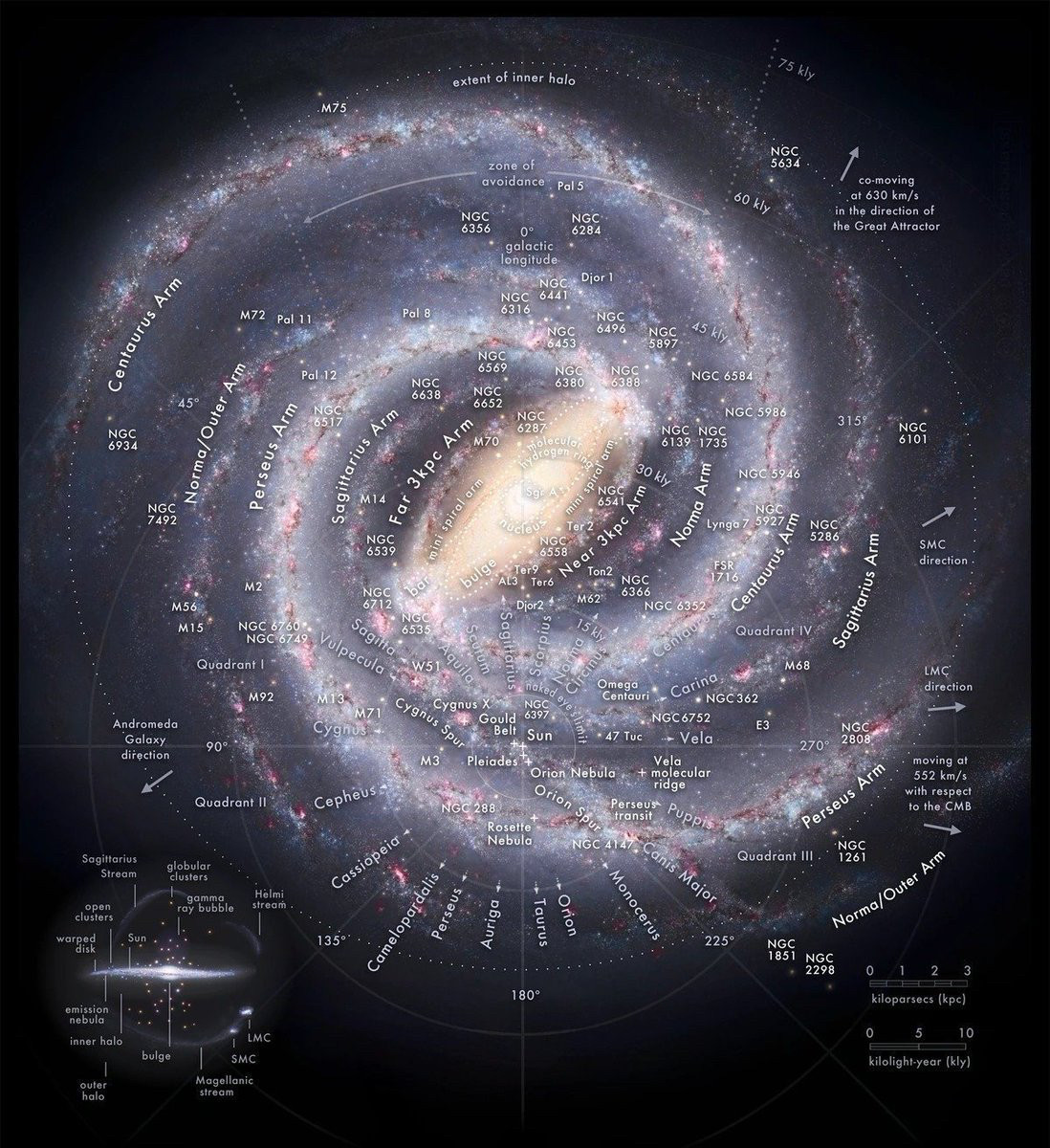this post was submitted on 13 Dec 2024
155 points (99.4% liked)
Map Enthusiasts
3839 readers
8 users here now
For the map enthused!
Rules:
-
post relevant content: interesting, informative, and/or pretty maps
-
be nice
founded 2 years ago
MODERATORS
you are viewing a single comment's thread
view the rest of the comments
view the rest of the comments

Wow I didn't realise the naked eye limit is that small.
So when we see that concentrated strip of stars across the sky (the "milky way"), is that just the Gould Belt, not one of the main arms?
Edit: no that can't be right - we can see the LMC and SMC, both just beyond the edge of the galaxy...
As I understand, the naked eye limit is the limit in which we can see distinct stars and not just a bright blurr. E.g. the centre bulge is visible from the southern hemisphere is outside the naked eye radius in the map.
Ahh, makes sense.
I'm not sure what part is more impressive... that stars are bright enough that we can see them fron 100s and 1000s of light years away, or that our eyes are able to resolve a pinpoint of light from that distance. Both angles are kinda mind blowing!
Only just now it's hitting me that when looking at globular clusters through a telescope, one is looking far, far beyond the single-star naked eye limit.
Is it also because the spiral is basically 2D, so from inside you can only see what's basically 1D (aka the visible band of the Milky Way)? We would literally not have the perspective to see very much the rest of the galaxy in our sky.
Amazing, too, that the Andromeda galaxy is so bright that we can see it from our galaxy.